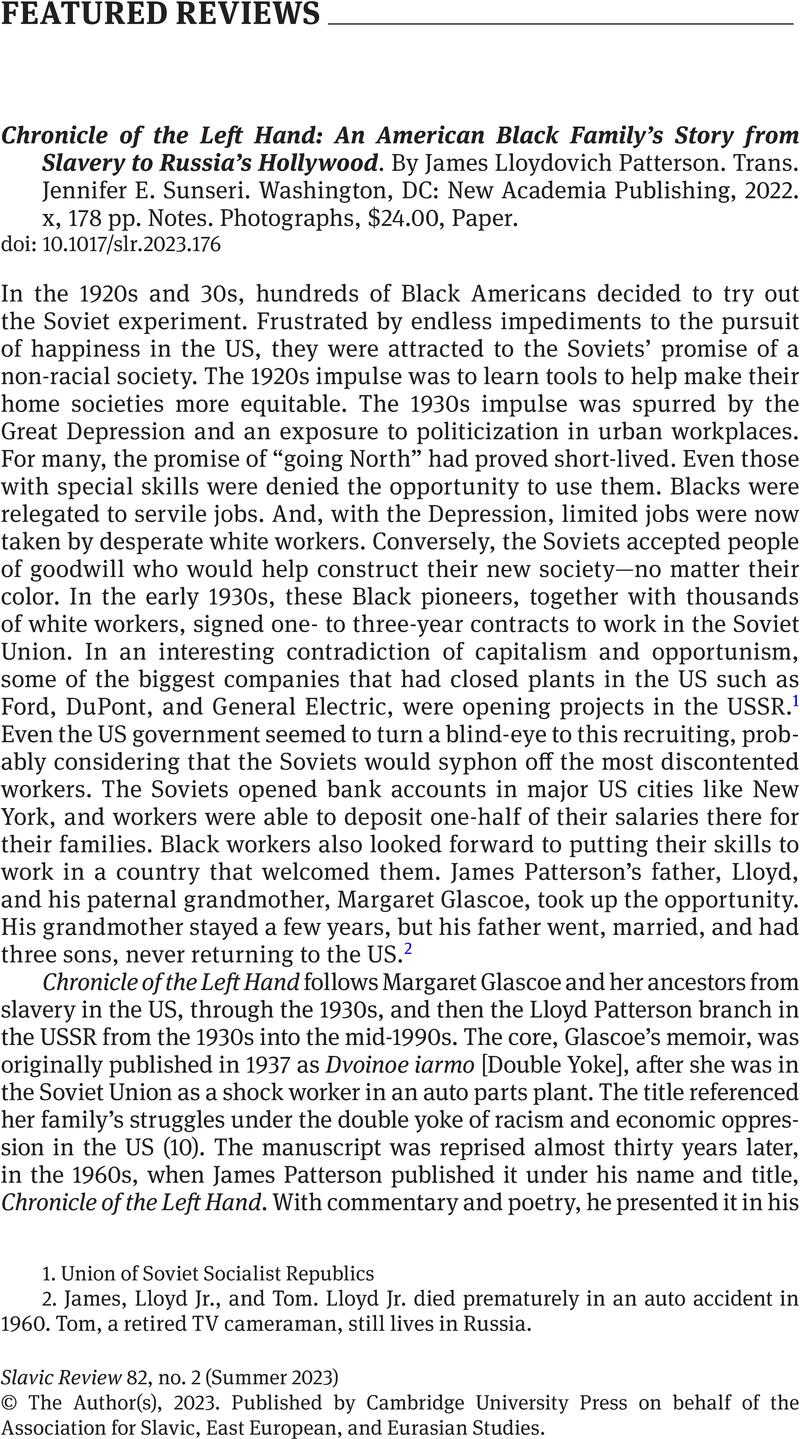No CrossRef data available.
Article contents
Chronicle of the Left Hand: An American Black Family's Story from Slavery to Russia's Hollywood. By James Lloydovich Patterson. Trans. Jennifer E. Sunseri. Washington, DC: New Academia Publishing, 2022. x, 178 pp. Notes. Photographs, $24.00, Paper.
Review products
Published online by Cambridge University Press: 01 November 2023
Abstract

- Type
- Featured Reviews
- Information
- Copyright
- Copyright © The Author(s), 2023. Published by Cambridge University Press on behalf of the Association for Slavic, East European, and Eurasian Studies
References
1. Union of Soviet Socialist Republics
2. James, Lloyd Jr., and Tom. Lloyd Jr. died prematurely in an auto accident in 1960. Tom, a retired TV cameraman, still lives in Russia.
3. Amy Ballard, Emerita Senior Historic Preservation Specialist with the Smithsonian Museum; Dr. Allison Blakely, Professor Emeritus of European and Comparative History from Boston University; and Dr. Rimgaila Salys, Professor Emerita of Russian Studies at the University of Colorado Boulder.
4. The “Black and White” film project was dropped by the Soviets when its anti-racist stance appeared to threaten the growing US-Russian development projects.


